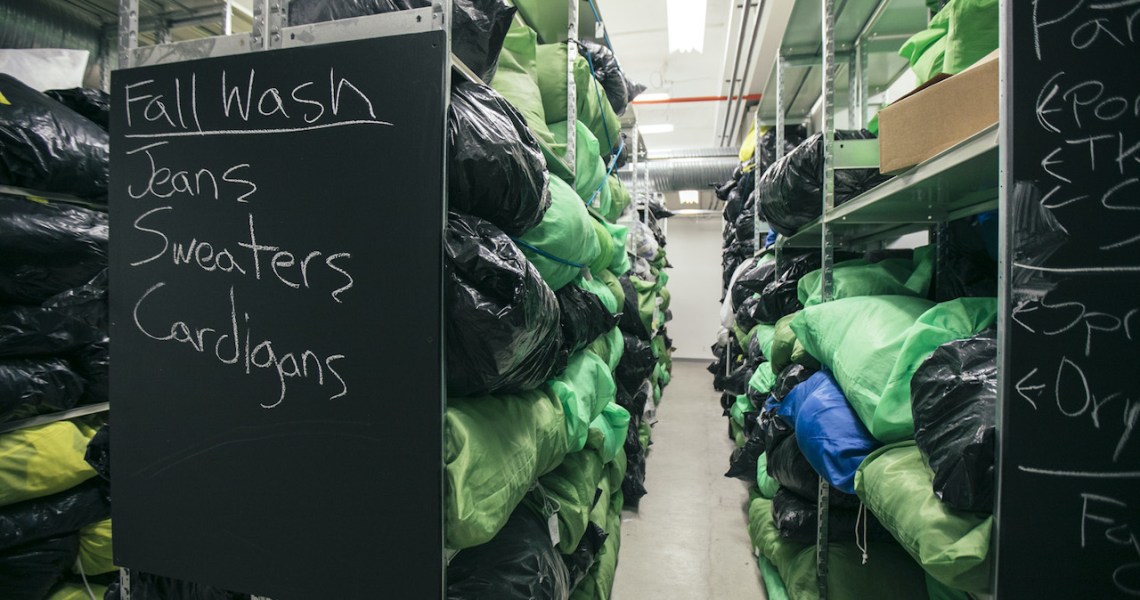Circularity has become a buzzword in fashion over the last five years, with more brands introducing ways to extend the life of a product or turn it into something else after it’s been worn. Brands regularly publicize what is done with products after they’ve been collected. But less is known about the process of getting those used products out of customers’ hands and back to the brand — it isn’t easy.
The takeback program can take many forms. Brands including Patagonia, Eileen Fisher and Cuyana have various methods for collecting and processing products. For example, the products are obtained via mail or in-store drop-offs, and they’re processed internally or with the help of a third party. Despite their complexity, these programs’ popularity is growing. Eileen Fisher took back 19,000 articles of clothing in March, up from 6,000 in January and 8,000 in February. Since launching its program in 2009, the brand has taken in 1.5 million pieces of clothing in total. Swedish footwear brand Vagabond Shoes reports having taken in two-and-a-half tons of shoes in 2019 alone.
With customers hungrier than ever for sustainable fashion, takeback programs are likely to continue to grow in prominence. But their complexity means that brands like Rothy’s, which announced last week its intention to create such a program in the next year, are being careful about how they build such programs.
Cynthia Power, director of renew at Eileen Fisher, said that one of the toughest things about managing takebacks is volume. Clothing is collected at the brand’s more than 50 stores around the country, and each piece must be sorted by hand at one of two warehouses in Seattle and Irvington, New York. To make collection easier, store associates hold returned products at the store until they have a large enough collection to send to the warehouse in one large bulk shipment. Customers can also send products straight to the warehouse, but Power said in-store takeback is more common.
“Even now, we’re still learning and figuring it out,” Power said. “For a while, we only resold perfect-condition product and recycled everything else. Only in the last year did we decide that we can resell more heavily used product at a lower price point, which changes our whole sorting process. So it’s definitely still changing all the time.”
Other companies get around the complexity of sorting product by outsourcing it to others. ThredUp is a popular choice, powering the takeback programs of several brands including M.M.LaFleur and Cuyana. M.M.LaFleur founder and CEO Sarah LaFleur said she started including a ThredUp bag with every shipped order to encourage customers to send clothes to ThredUp when they’re done with them. Meanwhile, for its takeback program, swim brand Fair Harbor uses a company called 2ReWear that launched at the end of July.
Saskia Van Gendt, head of sustainability at Rothy’s, is in the middle of creating a pilot takeback program and said the amount of options has been dizzying.
Ad position: web_incontent_pos1
“Even though people have been doing this, it’s still kind of uncharted,” she said. “We’re still trying to figure out what the best steps are for taking products back, what partners we should use, how our stores can play a role. Everything is on the table. This is a learning year for us.”
And brands are increasingly creating products with eventual takeback in mind. Another Tomorrow, a sustainability-focused brand, is launching its takeback program in the second half of 2021, but it has been planning for it since the brand launched in 2020. Every piece can be sold back to the company for a set price. Styles also come with a unique QR code that, when scanned, shows the history of the product and encourages customers not to throw it away when they’re done with it.
“In our case, our resale model is underpinned by a digitized product ecosystem, where each garment has its own digital identity,” said Another Tomorrow founder and CEO Vanessa Barboni Hallik.
Brands also need to think about how to incentivize these programs. Adidas’ recycled Futurecraft Loop sneaker has an obvious incentive, where customers need to send in their shoes in order to receive another pair. But for other brands, offering a gift card is usually enough. As encouragement, Eileen Fisher provides a $5 gift card for every piece given back to the brand, as do Madewell and sneaker brand Thousand Fell. (The latter lets customers send its sneakers to either Thousand Fell or its retail partner, Madewell.)
The final piece in the takeback program is making sure customers know that it’s an option. But here, too, brands need to be careful. Power said that Eileen Fisher still holds back on marketing its program too strongly. Occasionally, the company goes big — like two years ago, when it featured window ads in every store stating, “We’d like our clothes back, please.” But, in general, she said it’s important to make sure the messaging is commensurate with the brand’s ability to take back clothes.
Ad position: web_incontent_pos2
“I wish we did have more messaging around takeback,” Power said. “The way we’ve done it has been really sporadic, but we don’t want to overwhelm our logistics. Someone big like Patagonia can message about their takeback all the time, but for everyone else, you need to be careful.”




